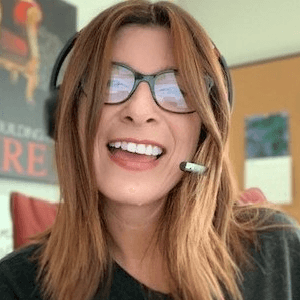-
News & Trends -
Sales -
Marketing Related Topics -
B2B Software Guides Related Topics -
Free Tools & Resources -
- About Us About Us


When a lead opts to receive emails from your business, they expect content that is relevant to them and their intentions with your brand. Email touchpoints offer valuable insight that familiarizes leads with your brand, while the best campaigns engage and nurture recipients as they move through your pipeline and get closer to closing and becoming a customer.
To help you create and optimize your email nurture campaigns, we’ve gathered the top tips from both sales and marketing experts in the following categories:
To learn if this nurturing strategy is right for you, and to get a step-by-step guide on how to set up your own campaign, head over to our ultimate guide on email nurturing.
The most effective lead nurturing campaigns require the lead to believe whatever touchpoints you initiate provide value. When this is the case, the recipient engages with email content as desired and warms up to the idea of using your products or services. Keep reading for unique tips on writing and creating the most effective email campaigns that are both personalized and nurturing.


Co-Founder & CEO
"Always focus on providing exclusive content that adds real value to your subscribers. This could be insider tips, early access to new features, or educational content that empowers them in their business or daily tasks. By doing so, you're not just selling, but also establishing trust and authority, which are key in converting leads into loyal customers."
— Vladimir Terekhov, Attract Group


Client Advisor & Founder
"Use storytelling to convey your message. Narratives capture attention and create an emotional connection. Share customer success stories, case studies, or anecdotes that resonate with your audience. They don’t have to be epic — even normal events in your daily life can be used to tell a story if you know how to connect them to the message you want to convey."
— Mark Damsgaard, Global Residence Index


CEO, Entrepreneur, & Business Coach
"Invite your recipients to share their thoughts, reply to your emails, or participate in surveys. This creates a two-way street of interaction, fostering a sense of community and involvement. People are more likely to engage when they feel their opinions are valued."
— Brett Smith, The Pickled Factory


CEO, President & Co-Founder
"Make sure your email marketing initiatives adhere to the 80/20 guideline. 80% of the time, provide your target audience with incredible value with no conditions. Then, aim for a sale in the extra 20% of the time. An alternative approach to this method may include allocating 80% of your material to offering value and the remaining 20% to promoting your goods or services. In any case, you want to assist your ideal customer as the primary objective of the conversation."
— Harrison Tang, Spokeo


Head of Marketing and Partnerships
"Since it’s to be assumed you aren't the only one from your industry to target the prospect, make your branding consistent throughout all your emails. Be sure to pay attention to how you subtly reinforce your brand image in the minds of the prospect."
— Mayank Batavia, QuickEmailVerification


Co-Founder & CMO
"To keep an email nurture campaign engaging, use a mix of formats and content types like videos, infographics, or customer testimonials. This variety maintains interest while also catering to different preferences of your prospects."
— Teresha Aird, Offices.net


Founder & Editor
"A compelling call to action (CTA) is essential for guiding your leads toward the desired action, whether it's visiting a website, signing up for a demo, or making a purchase. Clearly state the desired action you want your leads to take, using strong action verbs that convey the intended outcome. Make your CTA button prominent and visually appealing to draw attention and encourage clicks. Avoid using generic CTAs like ‘Click Here’ or ‘Learn More,’ as these lack specificity and fail to inspire action. Instead, use specific and action-oriented CTAs that clearly indicate the next step for your leads."
— Deepika Adhikari, The Nature Hero
Now that you’re confident in the contents of your email nurturing campaigns, you must strategize to whom, when, and how often you’ll send email campaigns. Continue reading for specific tips on mapping out your email drip campaign audiences and frequency.


Founder
"Make sure that the first email in your nurture sequence actually has a chance of landing in the buyer’s inbox by using a campaign manager tool. This means making sure you get your email sending and delivery settings right and your emails don’t automatically end up in a spam folder."
— Matthew Ramirez, Rephrasely and Rephrase Media


Co-Founder & CEO
"Make your email nurture campaigns effective by deliberately segmenting your audience. This means dividing your list into smaller groups based on shared characteristics, such as demographics, interests, or past behavior. By segmenting your audience, you can send more relevant and targeted emails that are more likely to resonate with each group. This can lead to higher open rates, click-through rates, and conversion rates."
— Andrei Vasilescu, DontPayFull


Vice President
"In email nurturing campaigns, timing is everything. Use data analysis to find out when it is best to send emails to your target audience. In addition, you should moderate the frequency of your emails so as not to annoy your readers. A well-paced nurturing campaign shows consideration for the recipient's time, which reduces the chance they’ll become disengaged."
— Jessica Chase, Premier Title Loans
Once you initiate a campaign and leads are receiving your emails, observe the campaign’s success and be prepared to make changes for optimized engagement. This includes tracking metrics and establishing A/B testing. Keep reading to learn how to consistently monitor and improve your email campaign strategy.


Co-Owner
"The first step in email nurture campaigns is to decide what your goals are. What do you want to achieve? For us, as an example, one campaign is for after the sale. It’s a 90-day follow-up with our clients. So you need to understand your audience and customers' expectations. This creates an opportunity for cross-selling and provides the client with what they need on each level."
— Lisamarie Monaco, InsuranceForBurial.com


Email Marketing Instructor
"It’s also worth it to scrutinize if your copy and design is actually delivering the value you need it to. Ask questions like ‘Is the email accessible?’ and ‘Is it going to be well received on client devices?’ Running through mundane quality assurance can actually be the turning point for where you normally lose out on engagement from your subscriber base."
— Naomi West, Jelly Academy


Managing Director
"It’s important to measure the success of email nurture campaigns through reports and analytics. This can be done by tracking specific metrics like open rates, click-through, or unsubscribe rates. This’ll help to identify which campaigns are successful and which ones need to be improved."
— Billy Parker, Gift Delivery


Marketing Manager
"Use A/B testing to find opportunities for improvement. Find out what resonates best with your audience by testing various combinations of subject lines, copy, images, and calls to action. A/B test findings should inform your decision-making so that you may fine-tune your campaign over time."
— Kartik Ahuja, Thailand Nomads
For an email campaign to effectively engage and nurture your leads, keep your campaign goals front of mind, personalize your email copy, and track and revise the campaign regularly. With this strategic approach, your recipients are more likely to see the value of your content. For more nurturing strategies to consider, check out our article on lead nurturing, where we provide you with clear-cut steps to create your own nurturing process with examples.


Allyssa is a sales writer with a background in B2B sales and account management. After earning her degree in English and communications, she spent her selling career supporting Fortune 1000 IT and finance companies including Bank of America, Wells Fargo, and Credit Karma. As a staff writer for Selling Signals, her specialties include lead nurturing, lead generation, and sales software topics. When she's not writing or updating articles, you can find Allyssa writing poetry, traveling, or picking up any new creative hobby.

Selling Signals delivers actionable advice for sales and marketing professionals. Learn strategies that help you hit targets, strengthen customer relationships, and win more business. Get expert advice on lead generation, sales processes, CRM software, sales management, and account management directly to your inbox.
Property of TechnologyAdvice. © 2025 TechnologyAdvice. All Rights Reserved
Advertiser Disclosure: Some of the products that appear on this site are from companies from which TechnologyAdvice receives compensation. This compensation may impact how and where products appear on this site including, for example, the order in which they appear. TechnologyAdvice does not include all companies or all types of products available in the marketplace.